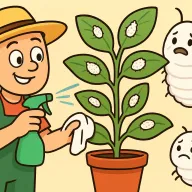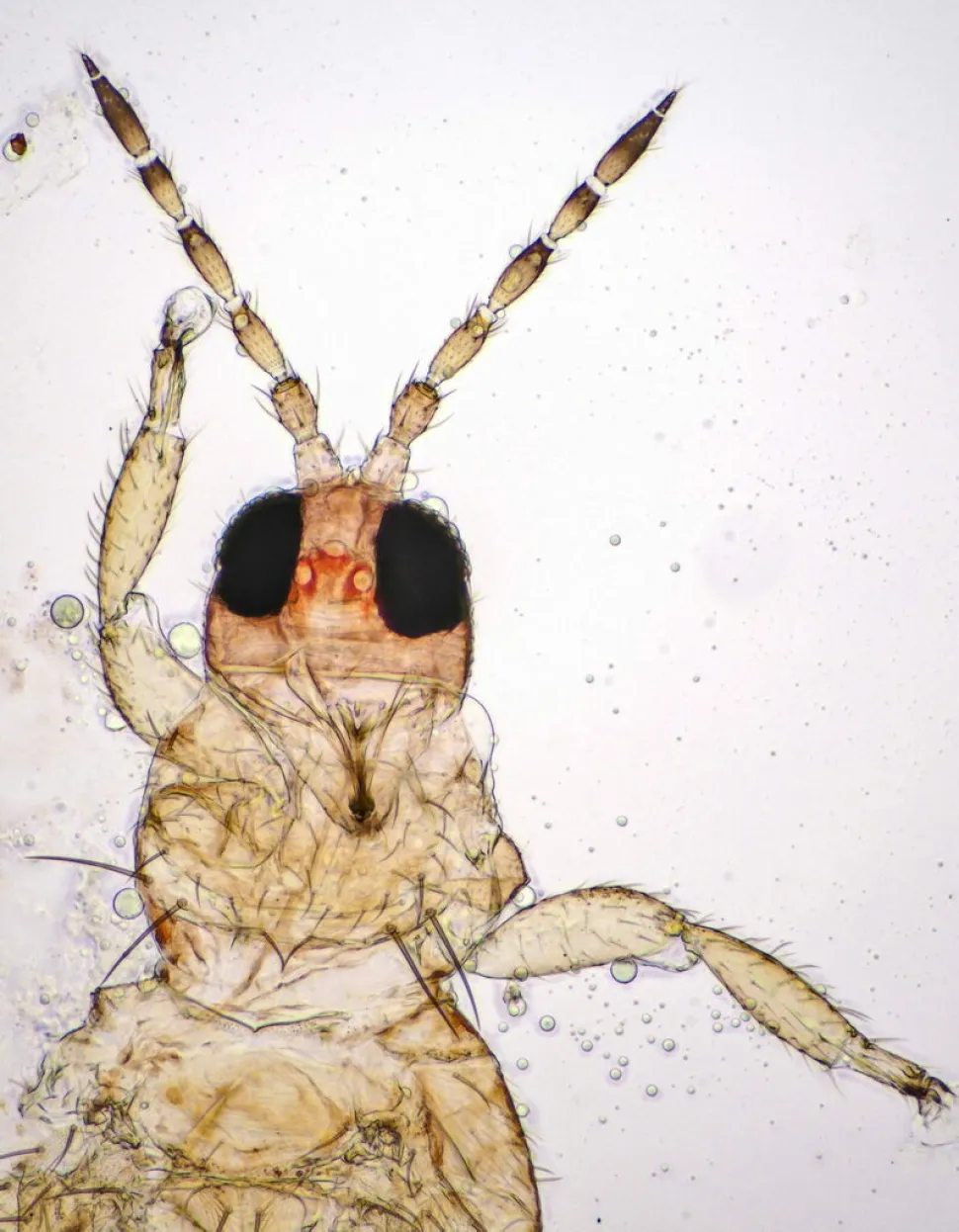
Thrips: how to get rid of thysanoptera?
Article for :All parent plants
Key points to remember :
A real nightmare for plant-addicts, thysanopterans can ravage a plant in just a few days. Is your favorite Maranta leuconeura infested? Do you prefer prevention to cure? Here's what you need to know to avoid invasion and get rid of thrips.
What are thrips?
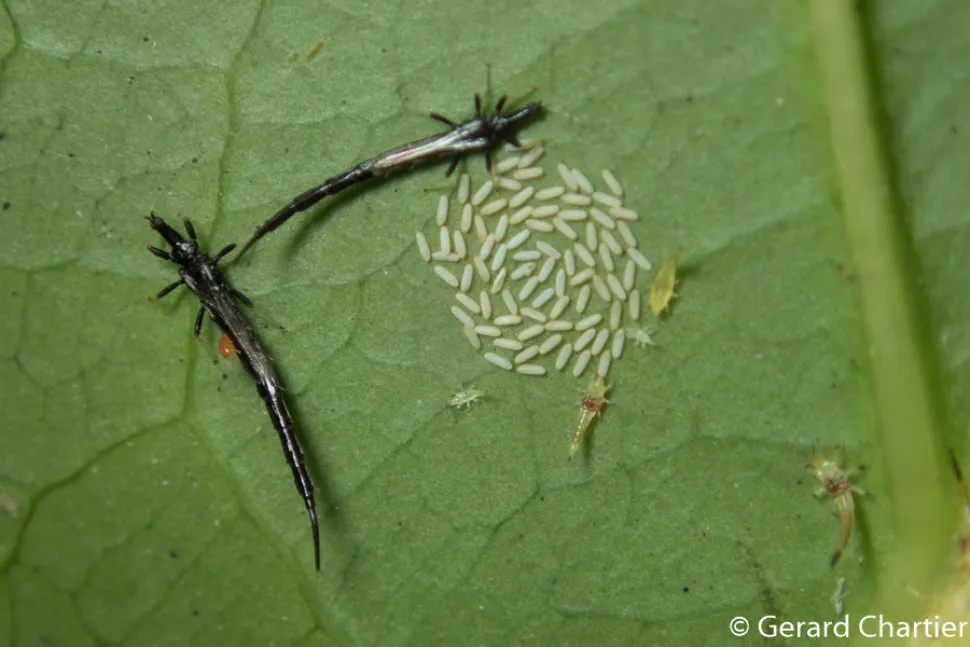
A family of thrips on a leaf - Photo by Gerard Chartier / Flickr
Thrips, sometimes called storm beetles, are insects belonging to the orderThysanoptera. There are several thousand different species, some of which have a particular plant of preference, while others attack all plants with little or no distinction.
Thrips are less than two millimeters long. They have elongated bodies, two pairs of wings, three pairs of eyes and antennae. They are usually white or black. They are biting and sucking insects. They use their mouthparts to pierce the plant structure (stem, leaf, flower bud, root, etc.) and suck out the sap.
Thysanoptera multiply rapidly. A female can lay hundreds of eggs in her lifetime. The beige, wingless larvae feed on plant sap as soon as they are born.
How can I tell if my plant is infested with thrips?
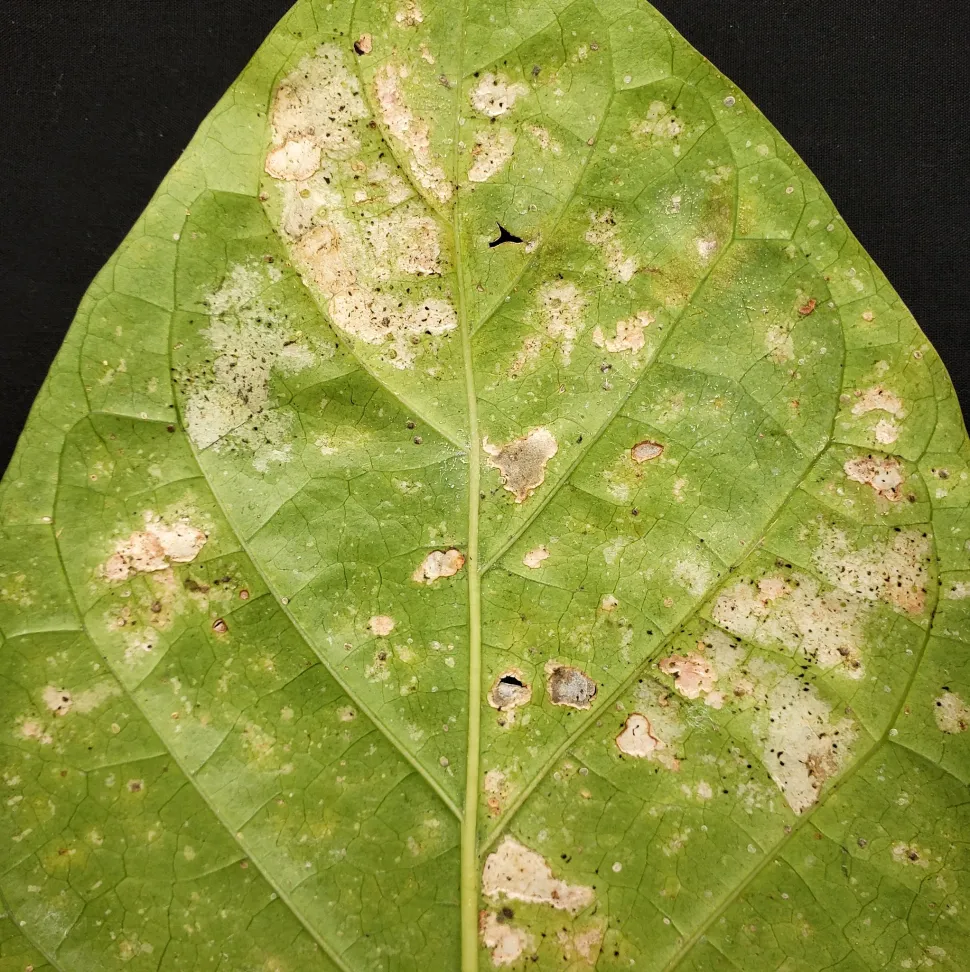
A leaf that has been attacked by thrips - Photo by Scot Nelson / Flickr
Thrips attack both indoor and outdoor plants. They attack vegetable crops, trees, flowers, ornamental plants..
There are many signs of a thrips infestation. The first is the presence of insects or larvae on the plant and in the soil. The second is the appearance of black spots on the leaves or stems: these are thysanopteran excrement. Finally, the sting leaves silvery or white streaks.
My plant has thrips, is it serious?
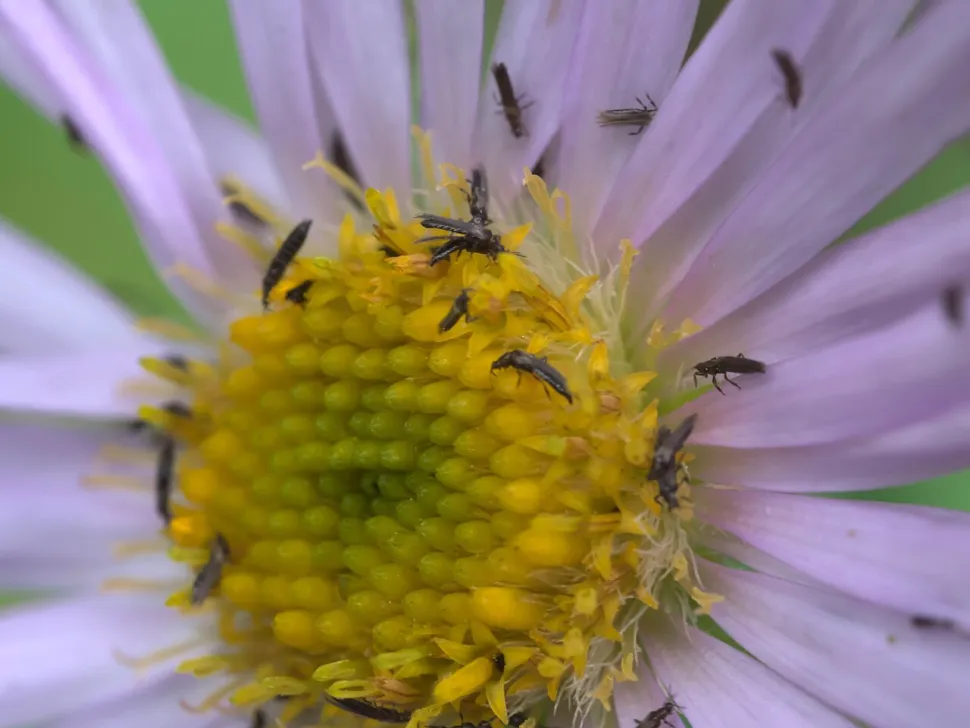
Sometimes, thrips are useful to plants - Photo by XPDA / Wikipedia
A plant attacked by thrips sees its growth slowed down. New leaves and flowers are deformed. Affected parts will fall off. Thrips can also attack roots. If you do nothing and the invasion spreads, your plant will eventually die.
Thysanoptera also carry diseases and viruses. In tomatoes, for example, they spread fusarium wilt virus and tomato bronzing virus. Weakened by thrips attack, the plant is more susceptible to disease and finds it harder to defend itself.
However, like many insects, thrips are not just a nuisance. Some species contribute to pollination.
How to get rid of thrips
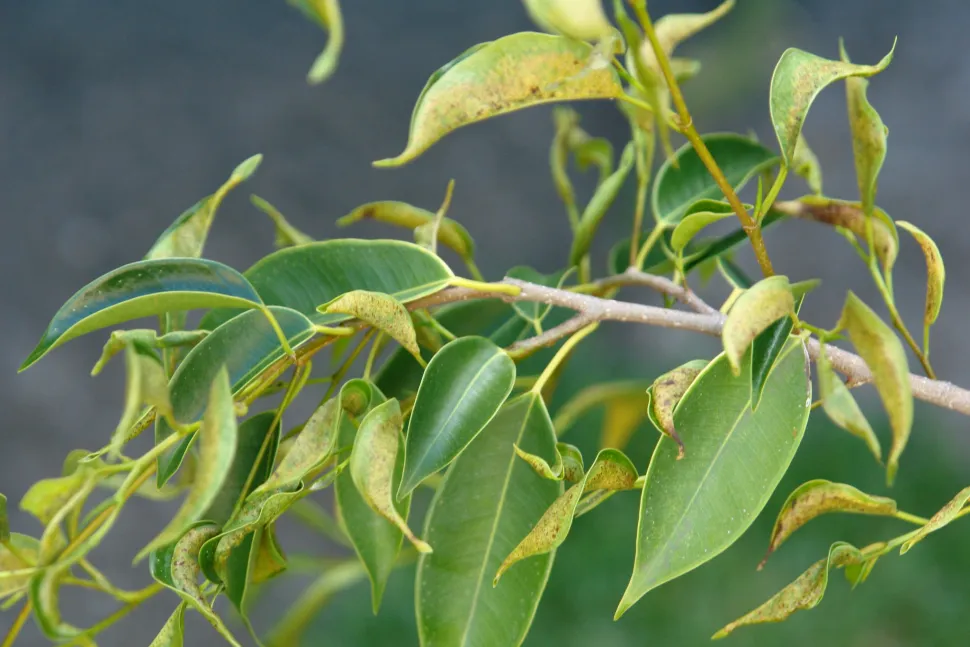
Deformed leaves won't return to their normal shape - Photo by Scot Nelson / Flickr
If one of your plants is affected by thrips, here's how to deal with it:
Isolate the plant
Isolate the infested plant from other crops, so that it doesn't contaminate them.
Remove deformed parts
Start by cutting off damaged parts (leaves, flowers, petioles, stems, etc.). They will not heal.
Treat all your plants
Your intervention will only be effective if you treat your entire collection. Thysanoptera fly from plant to plant. Thrips also cling to your hair and clothing. They can therefore move from one room to another.
Potting
The various treatments will get rid of the thrips on the leaves, but not the eggs and larvae hidden in the soil. Don't hesitate to repot your plant in new substrate to prevent the invasion from returning. You'll find all the information you need to choose your substrate in the Monstera application.
Clean
Also remember to clean pots, planters and surfaces (shelves, floors, etc.) to get rid of any thysanoptera that may have escaped from your plants.
Start again
Finally, you'll probably need to repeat your anti-thrips treatment seven to ten days after your first intervention. Observe the foliage of your plants. If the thysanoptera return, repeat the treatment.
Natural treatments to get rid of thrips
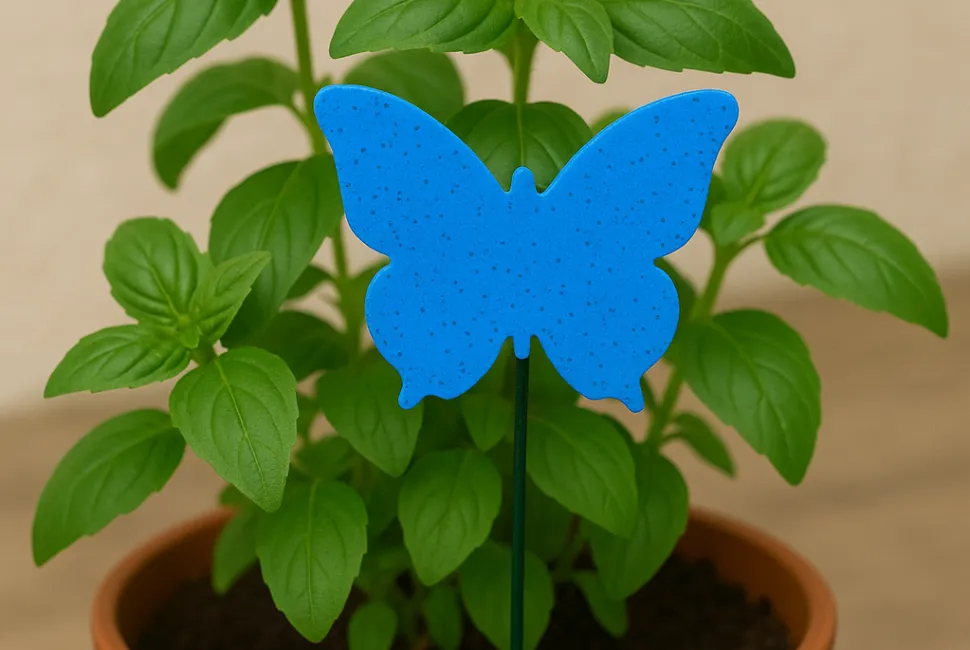
It's not the shape but the color of the traps that attracts thrips - Image by IA
Natural treatments are effective against thrips. What's more, they're safe for you and your pets.
Treatment no. 1: showering
If the infestation is limited, a good shower can get rid of thysanoptera. Use lukewarm water and spray each leaf on both sides.
You can surround the pot with a plastic bag to prevent the thrips from falling into the soil and surviving. This will also enable you to treat a plant you've just watered.
Treatment 2: Black soap
If water alone isn't enough to get rid of thrips, black soap is your best ally. It will asphyxiate the insects.
Dilute five parts water to one part black soap. Soak a soft cloth in the mixture and wipe over all leaves, top and bottom. Complete with a spray and leave for 12 hours. Then rinse thoroughly. Again, wrap your pot in a plastic bag to prevent the soapy water from flooding the substrate.
Preferably apply the treatment in the evening, when thysanoptera are less active.
Treatment no. 3: chromatic traps
Chromatic traps are commercially available. Attracted by their blue color, thrips approach and become trapped in the sticky surface. They are effective, even in cases of advanced infestation.
Thrips do move, but only over short distances. So you need to install the trap in the pot or close to your plants. It's ugly, but it's essential if the treatment is to work!
Treatment 4: biological control
Nematodes and lacewing larvae are the natural predators of thrips. They'll be delighted to get rid of your thrips!
You can buy cards or dilute solutions containing these beneficial insects at garden centers or online. Once released, they attack the thysanoptera without causing any damage to your plant.
Treatment no. 5: biological insecticides
Pyrethrum-basedbiological insecticides are effectiveagainst thrips. More powerful than black soap, they can be used to treat heavily infested plants. When using them, follow the manufacturer's instructions to the letter, to avoid overdosing.
Can neem oil be used against thrips?
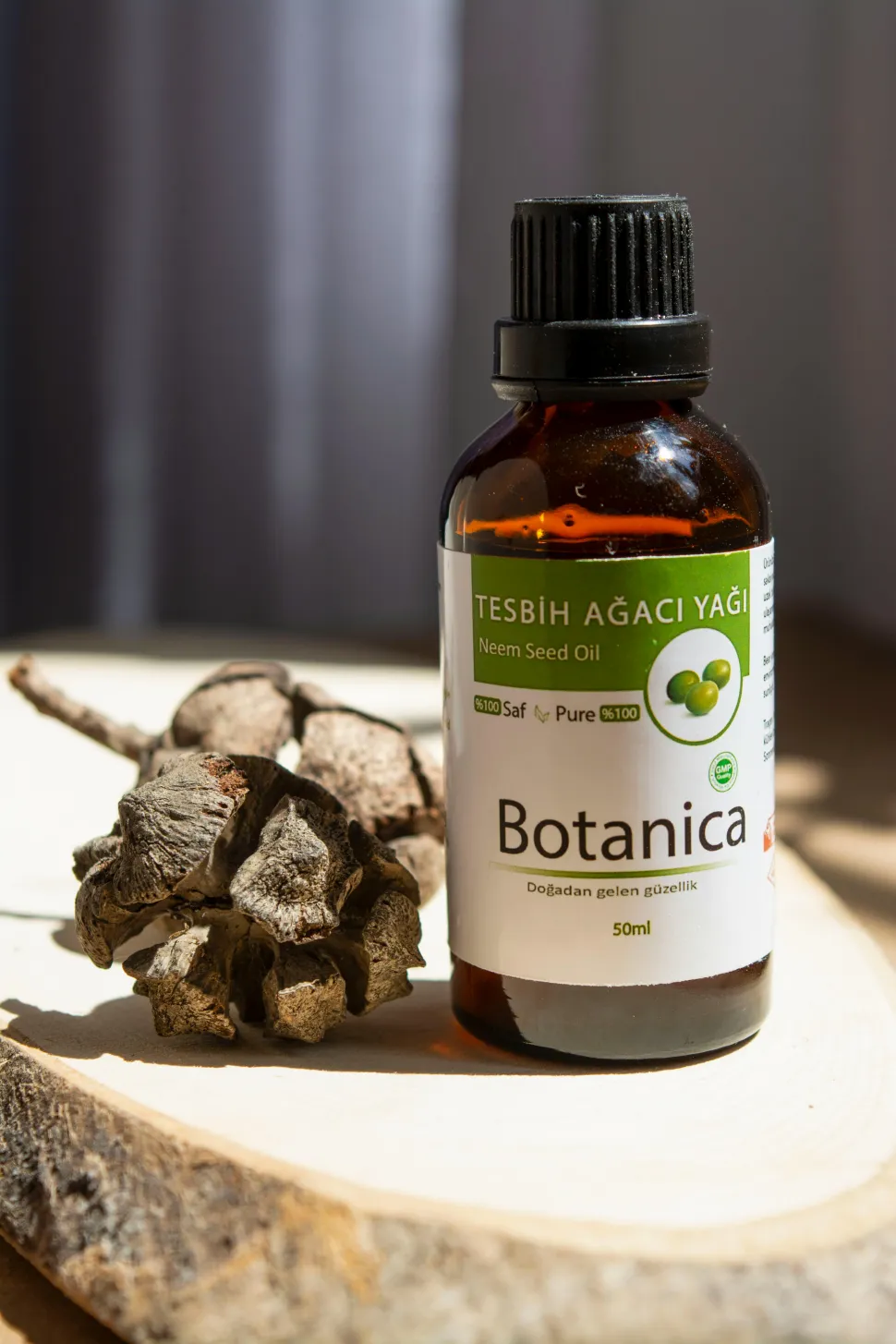
The sale and use of neem oil is, in theory, reserved for the manufacture of cosmetics; - Photo by Betül Üstün / Pexels
Many gardeners and websites recommend neem oil as a natural solution to thrips. However, the law prohibits the presentation and sale of neem oil as an insecticide. It can, however, be used to make soap and cosmetics.
Neem oil, obtained by pressing the fruit of the neem tree, is a danger to bees. It is also toxic, particularly if swallowed. We strongly advise against its use by
- pregnant women;
- in the presence of young children;
- in the presence of pets.
When faced with a thrips attack, it's best to use natural remedies. If the infestation is too heavy, turn to authorized, commercially available insecticides to treat your plants.
How to avoid thrips?
Thrips thrive in warm, dry environments. In the garden and vegetable patch, they are most prevalent in summer. However, they can be found all year round on houseplants.
The first thing to do to prevent thrips invasions is to examine your plants before bringing them home. When you buy a Monstera adansonii variegata or a Philodendron 'Silver Queen, look at your plant (especially the underside of the leaves) to make sure it's free of parasites. If in doubt, quarantine it so that it doesn't contaminate the rest of your jungle. The same applies to plants you already own that spend the summer outdoors. Make sure they don't bring any pests with them before bringing them in!
Finally,humidity isa good way to prevent thysanoptera. Regularly mist your plants' foliage or install a humidifier to make the air less dry. This will make the atmosphere less conducive to the development of thrips.
By Servane Nemetz
on 16-06-2025 at 15h51
on 16-06-2025 at 15h51



